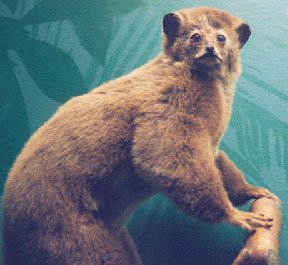This species has binocular vision. The weasel sportive lemur has a large cecum. On the hands and feet are large digital pads used for clinging. This species has a pelage color which is brown dorsally and gray-brown ventrally and has a gray colored head (Jenkins, 1987; cited in Harcourt and Thornback, 1990). The average body mass for this species is about 1 kilogram (Harcourt and Thornback, 1990).
RANGE:
The weasel sportive lemur is found in the country of Madagascar. This species is found in Northeastern Madagascar and has a southern limit from the right bank of the river Lokoho to the coast (Ratsirarson et al., 1987).
